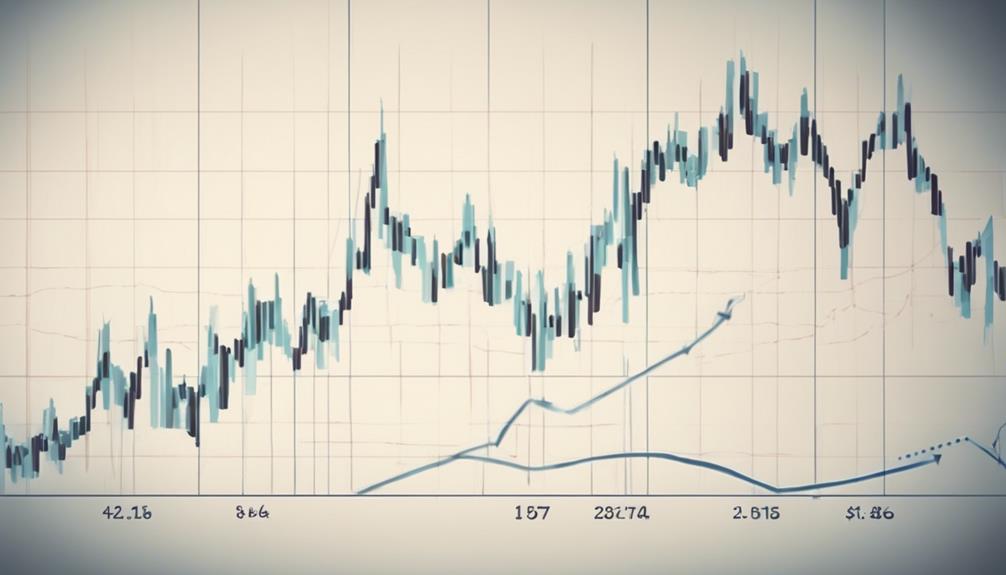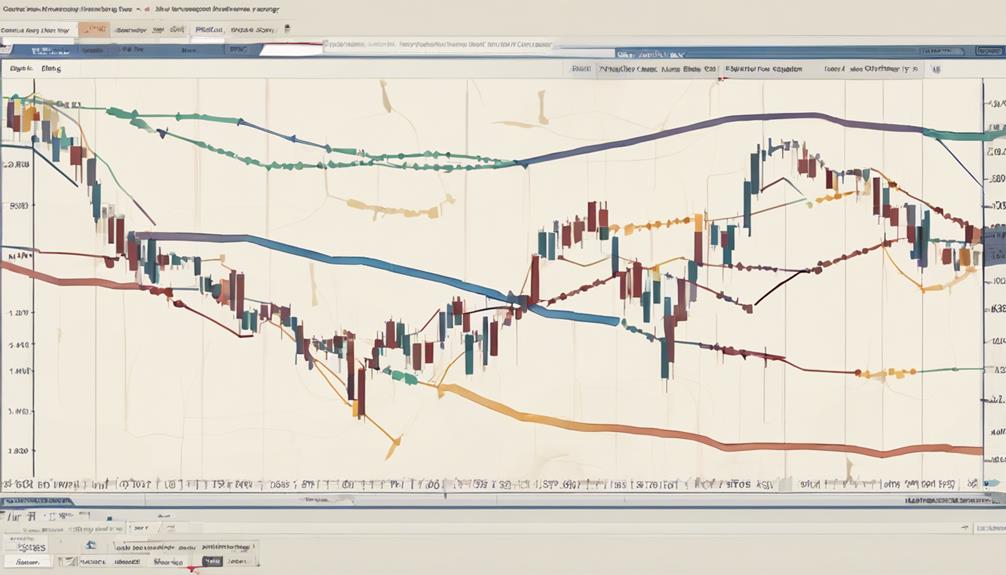Imagine you're a sailor navigating through rough seas, relying on the stars to guide your way. Similarly, in the world of trading, moving averages act as your guiding stars, helping you navigate the complexities of market trends.
By exploring the three best strategies involving moving averages, you can unlock a world of possibilities in enhancing your trading performance. Each strategy offers a unique approach to interpreting market behavior and generating valuable insights.
Simple Moving Average Strategy
When implementing a Simple Moving Average (SMA) strategy, choose the appropriate time periods for the moving averages based on your trading goals and timeframes.
The Simple Moving Average (SMA) is a valuable tool for identifying trends and support/resistance levels in the market. Traders often utilize the 50-day, 100-day, or 200-day SMA to gauge market direction effectively.
SMA crossovers, such as when the short-term SMA crosses above or below the long-term SMA, serve as crucial indicators for potential trend changes and entry/exit points.
Exponential Moving Average Strategy

Utilizing the Exponential Moving Average (EMA) strategy enhances market trend analysis by emphasizing recent price movements and providing a more responsive indicator compared to the Simple Moving Average. When considering EMA for short-term trend identification, its quick reaction to market movements proves beneficial.
Here are key points to note about the EMA strategy:
- EMA gives more weight to recent prices, making it responsive to price changes.
- Suitable for short and long-term trend identification due to its quick reaction to market movements.
- EMA crossovers are often used in trading strategies for buy or sell signals based on trend changes.
- Combining EMA with other technical indicators enhances trend-following strategies.
How Can Moving Averages Help in Analyzing Market Trends for Beginners?
Moving averages analysis is essential for beginners to understand market trends. By using moving averages, investors can identify the direction of a trend and potential support and resistance levels. This helps in making informed decisions and capturing profitable opportunities in the market.
Combination Moving Average Strategy

To enhance market trend analysis further, consider implementing a Combination Moving Average Strategy that involves utilizing multiple moving averages of different periods to generate precise trading signals.
This strategy commonly involves using a shorter-term moving average crossing above or below a longer-term moving average to signal potential trend changes. The crossover of moving averages can pinpoint buy or sell opportunities in the market, aiding traders in making informed decisions.
Popular combinations like the 5-day and 20-day moving averages or the 50-day and 200-day moving averages are often used for trend confirmation. By combining various moving averages, traders can develop a robust strategy that captures different aspects of market trends, ultimately improving overall trading performance.
How Can Moving Averages Help Predict Market Trends?
When it comes to predicting market trends, using moving averages effectively can be a valuable tool. By analyzing price data over a specific period, moving averages can help identify the direction of a trend and potential support or resistance levels. This can aid in making more informed investment decisions.
Frequently Asked Questions
What Is the Most Successful Moving Average Strategy?
For the most successful moving average strategy, combine different averages to filter noise and confirm trends. Use Golden Cross and Death Cross for buy/sell signals. Enhance with technical indicators. Backtest for optimal settings. Manage risk, adapt to market changes.
What Is the Best Moving Average to See a Trend?
For spotting trends effectively, rely on the 200-day moving average. It's a common choice for trend identification. Also, consider the 50-day moving average for short-term shifts. Combining them offers a balanced view of market trends.
What Are the 4 Moving Average Strategies?
Utilize moving averages strategically with crossovers for trend changes, trend-following to confirm market direction, smoothing to reduce volatility, and trend reversal to detect potential shifts. Combining different periods of moving averages can enhance trading effectiveness.
Which Strategy Is Best for Trending Market?
In a trending market, combine EMAs for quick trend spotting and SMAs for solid confirmation. Benefit from both EMAs' responsiveness to recent changes and SMAs' stability for overall trend direction. Develop a comprehensive strategy for success.
Conclusion
In conclusion, by mastering the art of moving averages and implementing the right strategies, you can navigate the complex world of market trends with ease.
Remember, the key is to stay adaptable and open to new possibilities. So, next time you analyze those moving averages, think outside the box and watch your trading game reach new heights.
Stay sharp, stay informed, and keep riding those trends to success.
